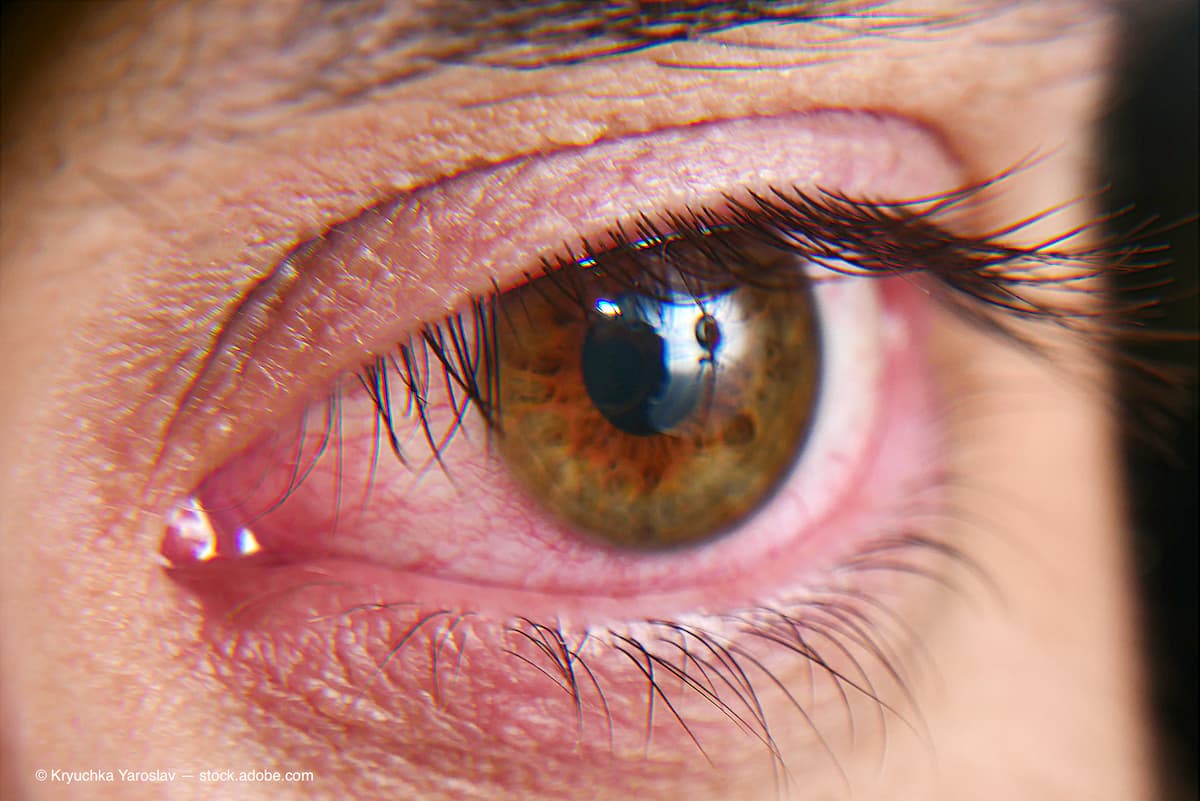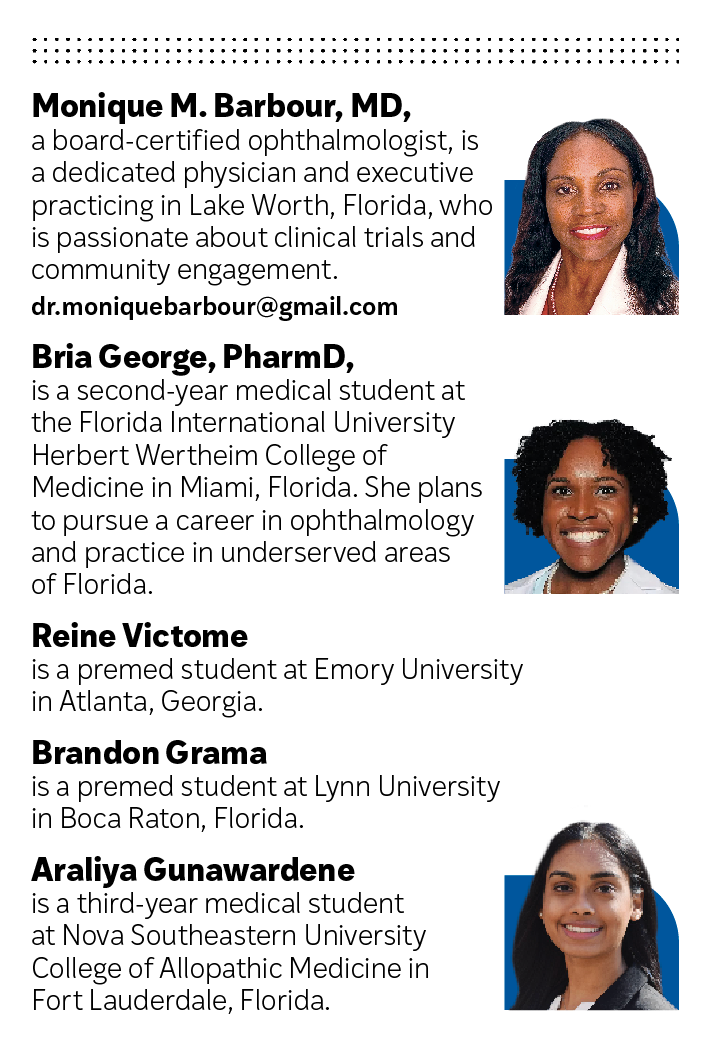New topical therapies for dry eye disease
Nasal spray may fill the gaps left by artificial tears.
Not only are so many individuals affected by dry eye disease, but the disorder is misunderstood. Depending on its severity, quality of life can be significantly undermined. It is the quiet ophthalmic pandemic. (Image credit: Adobe Stock/Kryuchka Yaroslav)

The prevalence of dry eye disease (DED) has increased in recent years, reportedly affecting as much as 60% of some populations.1 The number of adults with DED has increased since 2001, when studies indicated that up to 20% of people aged 45 years or older experienced symptoms.2 Not only are so many individuals affected, but the disorder is misunderstood. Depending on its severity, quality of life can be significantly undermined. It is the quiet ophthalmic pandemic.
The goals of DED treatment are restoration of natural tear film, protection of ocular surface, and eye comfort.3 Topical therapy has been the principal approach, and artificial tears have been its mainstay, improving symptoms up to 25%.4 A number of brands, like Systane, Refresh, TheraTears, Similasan, and iVIZIA—the latest to hit the market—are available without prescription. Systane Lubricating Eye drops, in particular, have been shown to relieve the symptoms of moderate DED.5
If patients fail to respond to lubricants, behavioral adjustments, environmental changes, and prescription topical therapy may be indicated. Restasis (Allergan), Cequa (Sun Pharma), Xiidra (Novartis), and Eysuvis (Kala Pharmaceuticals) are currently available, as well as the first generic version of cyclosporine, which was approved in February 2022. Restasis and Cequa are both approved by the FDA for DED and contain the same active ingredient: cyclosporine A. However, Cequa delivers .09% cyclosporine A through nanomicelles. Cyclosporine A is a calcineurin inhibitor immunosuppressant indicated to increase tear production that has been shown to protect human conjunctival epithelial cells from apoptosis.
As of 2021, the FDA had approved 0.03-mg varenicline nasal spray (Tyrvaya; Oyster Point Pharma) for use twice daily in the treatment of DED. It is believed that varenicline, a cholinergic agonist, binds at the nicotinic receptor to activate the trigeminal parasympathetic pathway, which leads to an increase of basal tear film6 that lasts 10 to 12 hours. As the
first nasal spray approved for DED, Tyrvaya offers another drug delivery option. At this time, there are no known contraindications for its use.
Which patients can benefit from varenicline?
At Clear Vue Laser Eye Center, we performed a retrospective review of patients who have been using varenicline since it became available and found that many of those with glaucoma—who use several eye drops and are especially at risk for ocular surface toxicity due to preservatives—were especially grateful. Varenicline should also be considered in patients whose hands are stiff (arthritis) or unsteady (Parkinson disease) and those who are allergic to cyclosporine. In addition, patients who simply don’t like eye drops are considering this as a first-line method. Among them, contact lens wearers may be the largest subset of patients opting for varenicline because they frequently report blurred vision after using eye drops while wearing contacts. Patients who had undergone intraocular or extraocular surgery were excluded from varenicline clinical trials.6 In my review, however, I found that many patients who must administer topical medications almost hourly after cataract surgery and those whose ability to blink may be limited after blepharoplasty can also take advantage of this alternate route.
What are the main concerns with varenicline use?
Tyrvaya comes in a package of 2 vials, each of which should last for 15 days. Confusion with dose delivery is uncommon; however, I am aware of at least 1 patient who thought they were supposed to spray it into their eyes and therefore ended up not using it at all. We stood with the patient and demonstrated how to prime and spray to ensure they knew how to use it and that it went into the nose. We always inform patients about the possibility of temporary sneezing, which can last for at least 30 seconds. A neat hack we’ve discovered to minimize the chance of sneezing is to tell patients to occlude their nasal passages by squeezing the alar tips together to prevent inhalation. This allows the medication to remain on the target area and subsequently pass out of the nose instead of being absorbed into the sinuses. Of the hundreds of patients treated in my practice, none has reported blurry vision, red eyes, aftertaste, or an allergic reaction to varenicline.
Our patients with glaucoma absolutely loved having a non-drop option for the treatment of dry eyes caused by chronic administration of various medications. Dozens of patients with arthritis who were unable to use drops owing to limited mobility or stiffness reported how easy the spray was to use and preferred it over all other eye drops.
Contact lens patients did not feel their eyes were blurry after using varenicline nor did they continue to experience fluctuating vision during the day. In addition, they did not have to remove the lenses and felt no interference when using varenicline and wearing lenses. For the most part, they experienced improved contact lens tolerance and stable visual acuity for the duration of drug action. This subgroup of patients, many of whom also use digital devices for extended periods, reported less ocular discomfort and redness while using the spray.

After cataract surgery and laser vision correction, patients were happy to have an alternative to eye drops during the post-op period when they are supposed to instill topical antibiotics and steroids. When their eyes felt very dry or they were experiencing post-incisional discomfort, they found the spray to be particularly helpful. Moreover, the nasal route did not wash out or dilute the potency of the other topical medications they had to use to promote ocular surface healing. Patients who have undergone upper blepharoplasty reported that 0.03mg varenicline solution was a real sight saver during the first few days when their blink response was slower.
Summary
Varenicline nasal spray's revolutionary delivery system is ideal for dry eye sufferers. It is ideal for the comfort of patients with glaucoma, arthritis, or Parkinson disease and those who wear contact lenses or have undergone cataract, LASIK, or blepharoplasty surgery. Anecdotal data extends varenicline’s purpose in combination with topical immunomodulator therapy; its ease of use and efficacy are simply superior and were long overdue.
References
1. Donaldson K, Parkhurst G, Saenz B, Whitley W, Williamson B, Hovanesian J. Call to action: treating dry eye disease and setting the foundation for successful surgery. J Cataract Refrac Surg. 2022;48(5):623-629. doi:10.1097/j.jcrs.0000000000000844
2. Brewitt H, Sistani F. Dry eye disease: the scale of the problem. Surv Ophthalmol. 2001;45(suppl 2):S199-S202. doi:10.1016/s0039-6257(00)00202-2
3. Benelli U. Systane lubricant eye drops in the management of ocular dryness. Clin Ophthalmol. 2011;5:783-790. doi:10.2147/OPTH.S13773
4. Doughty MJ, Glavin S. Efficacy of different dry eye treatments with artificial tears or ocular lubricants: a systematic review. Ophthalmic Physiol Opt. 2009;29(6):573-583. doi:10.1111/j.1475-1313.2009.00683.x
5. Versura P, Profazio V, Campos EC. One month use of Systane improves ocular surface parameters in subjects with moderate symptoms of ocular dryness. Clin Ophthalmol. 2008;2(3):629-635. doi:10.2147/opth.s3731
6. Oyster Point Pharma announces FDA approval of TYRVAYA (varenicline solution) nasal spray for the treatment of the signs and symptoms of dry eye disease. News release. Oyster Point. October 18, 2021. Accessed February 8, 2023. https://investors.oysterpointrx.com/news-releases/news-release-details/oyster-point-pharma-announces-fda-approval-tyrvayatm-varenicline

Newsletter
Want more insights like this? Subscribe to Optometry Times and get clinical pearls and practice tips delivered straight to your inbox.